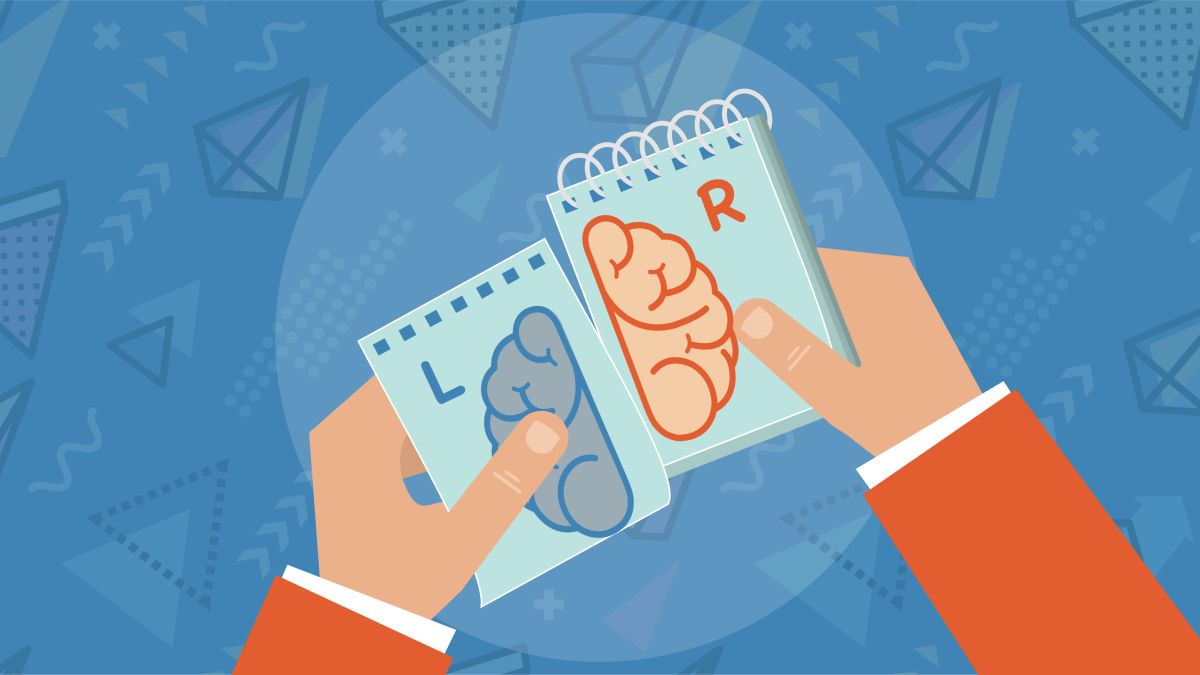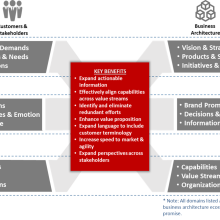Get ready for a great StraightTalk installment. In this post, No. 16, we explore a topic that everyone wants to know about in this age of organizational transformation — customer experience.
As we know from way back in Post No. 1, business architecture and customer experience design are two separate but mutually beneficial disciplines that work together. We’re going to explore that in more detail with our guest star, Mike Clark, who is a true expert in bringing these two worlds together. Mike helps organizations solve complex problems, not constrained by any one discipline, with a clear focus on the human experiences that design and ultimately resolve these critical problems.
Mike gives us the straight talk on how business architecture and customer experience relate. This post is based on our recent interview with him. Disclaimer: we’ve made some tiny adjustments for our typical StraightTalk-style: the blue headings represent StraightTalk asking the questions and our guest, Mike, responds in turn. Do not miss hearing this engaging interview firsthand in our StraightTalk podcast 5-Minutes With Mike Clark.
Start with the basics. Tell us, what is customer experience?
Mike: It’s important to note that there is a bit of a danger that we forget customers are actually human beings. So, if you take that view, from my perspective, a service that does what customers expect is usually perceived as a quality experience. But to make a great experience, you’ve literally got to set the right expectations and meet them whenever and wherever you engage your customers. This is an experience.
Once you’ve delivered the basics which people expect, then you can bring the unexpected moments of “wow” to life which tend to keep them coming back. I think sadly too many organizations forget the basics. They are almost seduced by the “wows” the great technology companies can bring to consumers, but what they seem to forget is those companies get the basics absolutely spot on.
Why is the concept of customer experience top of mind for so many organizations? Why should we care?
Mike: It’s become more front of mind because our engagement with technology and services has given us more choice. A great experience, and particularly one that brings people back to your organization, whether it be for a product that you provide or a service that you offer, is going to be absolutely crucial—particularly if you think that consumers now have ecosystems that they play in, and almost allow organizations to be a part of their world in terms of what they use every day.
With so much choice, if you get the experience wrong, you can quickly become forgotten in a customer experience world and customers will choose the competitor that meets their needs and helps them achieve the outcome they are looking for. For that very reason, experience has become not just a hot topic anymore—it’s become almost a hygiene and a necessity factor.
How does customer experience relate to business architecture?
Mike: I think in business architecture, historically the focus has been on business capabilities and that’s kind of where our focus started and ended. But when we start thinking about consumers and customers, the starting position is experience and the need that they are trying to fulfill. Experience has always played a fantastic role in that space but I’ve always been left wondering, “How do you deliver that experience?” “How do you understand the impact of that experience in the organization?” “What capabilities would be affected?” and “How would you organize the business to deliver that experience?”
This is where the alignment comes in. When we align customer experience and business architecture, it gives us the ability to not only design the experience from the outside—but then take that knowledge and implement it, and align it to the business strategy and all of the things that need to be done. The alignment is a perfect match because you can look at the world through the customers’ eyes and then be able to deliver it. I am truly passionate about the fact that there is an actual alignment between these two disciplines, and if done correctly, we have an ability to deliver really great services to our customers.
P.S. Here’s a diagram comparing and contrasting the customer experience and business architecture disciplines.
Lightning Round. Rapid fire questions, one response each. Here we go…
What’s your favorite book on customer experience?
Mike: I’m going to cheat and give two on this one. Going back to where I started, there were two books that I read which drew me to the alignment between the two disciplines. The first is a book called Change By Design by Tim Brown of IDEO, which is probably the first book on design thinking that was ever released. It’s about experience, but not in the way you know it; it talks about how design plays a role in designing business.
My second favorite is The Opposable Mind: Winning Through Integrative Thinking by Roger L. Martin, who also wrote The Design of Business. For me, these were two of the most important books on the right and left brain thinking around experience and business design that gave me the alignment story.
Your favorite customer experience technique?
Mike: I would say customer life cycles. They sit higher than a customer journey and allow you to align capabilities to the movement of the consumer through all of the phases from awareness of your product through leaving. Life cycles are almost a precursor before you start getting into journeys.
Who’s your favorite customer experience guru—like other than you, who should we all follow?
Mike: I’m a massive fan of Tom Hulme. Tom Hulme is previously the creative director of IDEO and he is a Board of Director of OpenIDEO. He tends to look at the broader design perspectives, with a clear focus on human-centric design. I think he’s a great person to look at to understand the impact that design can make.
There are obviously other people that you can look to as well, like service design agencies such as Livework Studio or IDEO, who really are leading the way in terms of combining business and design.
Last question: If customer experience and business architecture were to have a six-word memoir, what would it be?
Mike: I wrote a blog post when I started looking at this alignment and that post became one of the most popular. I think the title is quite apt for both which is, design the experience around your business.
More good stuff
5-Minutes With Mike Clark (StraightTalk podcast): Just in case you missed the link at the beginning of this post, you can listen to the podcast with Mike Clark how business architecture and customer experience relate, which was the basis for this post. Mike gives a brilliant interview, don’t miss hearing it firsthand.
Aligning Design With Business Architecture (SlideShare): A fantastic presentation from Mike Clark during the 2014 Business Architecture Guild® Business Architecture Innovation Summit on creating the elusive 360 model of the business.
Business Architecture and the Customer Experience: A Comprehensive Approach for Turning Customer Needs into Action (Business Architecture Guild® White Paper on Public Resources page): Official white paper here that establishes how the customer experience design and business architecture disciplines work together.
Customer Experience Architecture (Livework Studio): A concise piece from Mike Clark on designing the business around customers’ experience.
Change By Design (Book by Tim Brown): A great introduction to design thinking.
The Opposable Mind: Winning Through Integrative Thinking (Book by Roger L. Martin): How to master the vital skill of integrative thinking by drawing on different kinds of knowledge, including conceptual and experiential knowledge.
Customer Experience and Design Experts to Check Out:
- Tom Hulme + Check out Tom’s TED Talk on what we can learn from making consumers part of the product development process.
- Livework Studio (check out the blog and books too) – A global pioneer of service design.
- IDEO (check out the blog too) – A global design and innovation company.
The Divided Brain (TED Talk): A talk + animation from Iain McGilchrist that tells a different story about left brain versus right brain, and reveals the interplay between the two to be even more fascinating than we thought.

